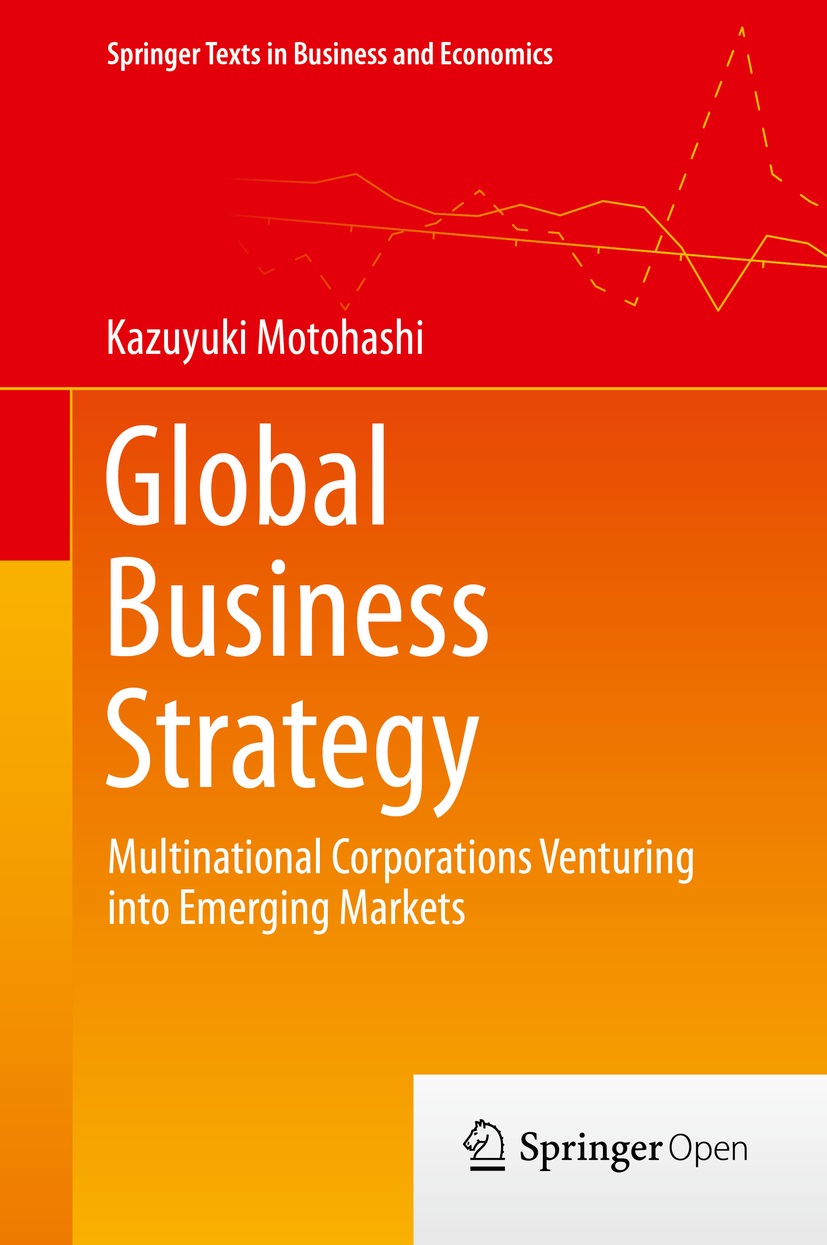
Title
Springer Texts in Business and Economics Global Business Strategy Multinational Corporations Venturing into Emerging Markets
Size
259 pages
Language
English
Released
2015
ISBN
978-4-431-55467-7
Published by
Springer Japan
Book Info
See Book Availability at Library
Japanese Page
With the advent of the 21st century, the environment surrounding the global economy is drastically changing. Central to this is the rise of emerging economies. In terms of GDP share, the position of developed countries such as Japan, the United States, and European countries in the global economy has fallen from around 80% in 2000 to nearly 60% in 2010. According to my estimate, this ratio will drop to around 50% in 2020 and around 40% in 2030. On the other hand, emerging countries such as China, India, and Brazil are increasing their presence. In terms of population, the 20th century economic model, in which 10% of developed countries earn 90% of the wealth, is collapsing. For companies in developed countries, the need to build management strategies that can cope with the new era is increasing.
This book is a structured summary of the global strategies of companies in developed countries to cope with the response of emerging countries. While textbooks on international management theory have mainly targeted expansion into developed countries, the uniqueness of this book is that it fully covers emerging countries, which have very different business environments. In addition, I cover China and India, which can be said to be the two largest emerging countries of the 21st century, and conduct case studies on companies that have developed businesses in these countries based on the actual situation of these businesses in environments that are different from those in developed countries such as Japan.
In addition, I advance the discussion keeping in mind the company strategy for optimally utilizing domestic and overseas management resources on a global level, rather than having a narrow perspective of business development overseas. For many companies in Japan, overseas sales account more than half of their total and an overwhelmingly large number of these sales are made through overseas subsidiaries. However, the Japanese headquarters mainly focus on the organization and governance of corporate groups that include overseas subsidiaries, and there are few companies that can truly carry out global management making full use of overseas diversity. The main battlefield of business has changed from domestic to overseas, specifically to emerging countries. In this situation, it is also important for corporate organizations not only to manage from their headquarters, but also to shift to forms that make use of local diversity.
Business development in countries with different cultures and economic systems, especially developed countries such as Japan, and countries that are under very different circumstances, such as China and India, constitutes a great risk. However, as can be seen in reverse innovation, which is covered in this book, these domestic and overseas differences sometimes create business value. In addition, securing internationalization and diversity of human resources for innovation is also an important issue in corporate strategy. Korean and Chinese companies are gaining power in the electronics and the Internet industries and this is raising concerns about the international competitiveness of Japanese companies. However, I hope that promoting corporate strategy on the premise of global economy can revitalize Japanese industrial competitiveness.
(Written by Kazuyuki Motohashi, Professor, School of Engineering / 2018)
Table of Contents
Management Strategies for Global Businesses
Changes in the Global Economic Environment
Comparison of Economic Institutions in China and India
New Business Model as Response to Competition from Emerging Economics
India’s Neemrana Industrial Park for Japanese Firms
Alliance-Based Global Strategy
Hitachi Construction Machinery: Becoming a Wholly Owned Chinese Entity
Marketing Theory in Global Business Context
Shiseido Marketing in China
International R&D Management
Multinationals’ R&D in China and India
Thailand’s National Science and Technology Development Agency and Japanese Firms
Suzuki Motor’s Expansion in India
Strategy Integration at the Global Level



 Find a book
Find a book

